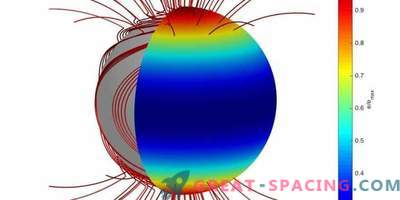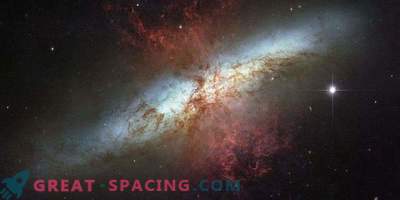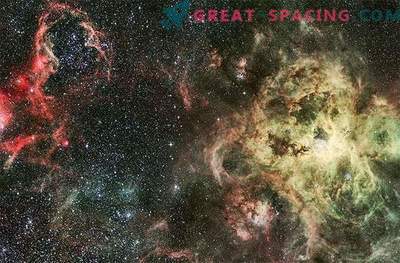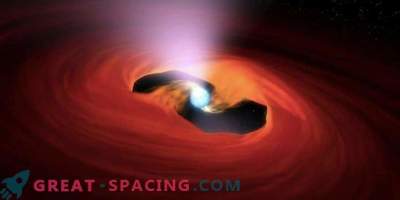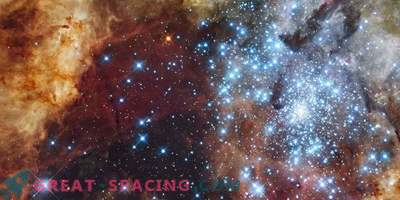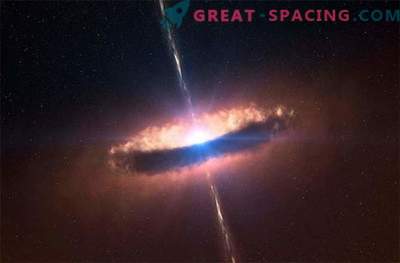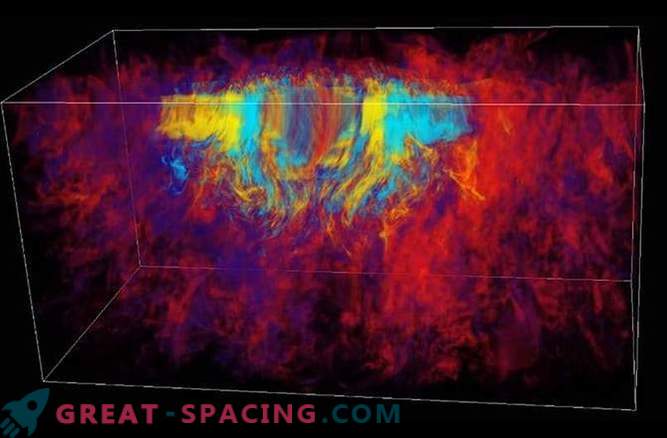
Although intense magnetic fields have long been considered the cause of the most powerful supernovae, astrophysicists have created a computer model of the magnetic field, demonstrating what is happening inside a dying star before it turns into a space monster.
When massive stars die, they explode. But sometimes, such stars explode very strongly, and produce one of the most powerful explosions in the observable Universe.
When a massive star depletes its supply of hydrogen fuel, strong gravity inside the nucleus causes a gradual fusion of its more massive elements. On a cosmic scale, this process is fast. But as soon as the fusion with iron occurs, the process stops abruptly. The thermonuclear reaction in the nucleus stops, and the force of gravity seeks to completely destroy it.
Within just one second, the star’s core is sharply compressed, and decreases in diameter from 1,000 to 10 miles, which leads to the emergence of truly gigantic shock waves, which, as a result, tear the star apart. In short, the following happens: the star exhausts its fuel, compression, shock waves, massive explosion. All that remains of it is a rapidly expanding cloud of hot gas and a tiny neutron star spinning rapidly in the place where the nucleus used to be.
This model is understandable and well suited to explain how massive stars die. But sometimes, in the farthest corners of the universe, astronomers notice explosions of stars whose power far exceeds that which can be explained by traditional supernova models. Such explosions are called gamma-ray bursts, and it is believed that their appearance is caused by a special breed of supernova, the Hypernova. Besides the fact that Hypernova is named after a villain from a movie based on Marvel comics, it is also the epitome of magnetic intensity. The collapse of the core of a massive star not only leads to a rapid increase in its density. The star continues to rotate, and, like a figure skater, who presses her hands to herself while rotating, the collapsing core of the collapsing star begins to “unwind” quickly. Along with the rotation, the turbulent currents in the emissions of superheated plasma and the star’s magnetic field become extremely concentrated.
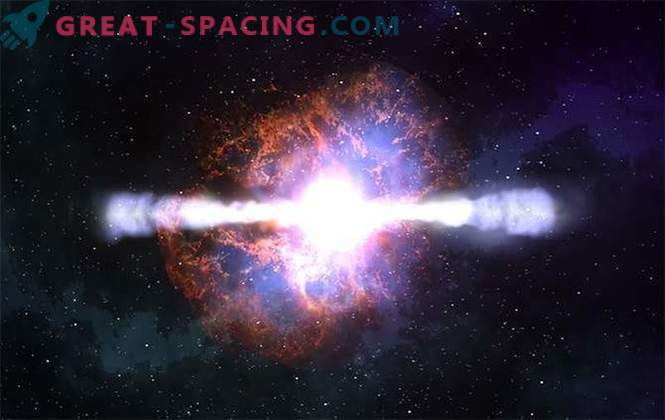
Hypernova star, forming 2 gamma jets (in the artist's view)
Until now, the effects caused by the collapse of the supernova nucleus were considered to be sufficiently well studied - in theory, but confirmed by observations of supernovae. But the mechanism of hypernovae (and gamma-bursts) has not been fully studied until this time.
Using simulations on one of the most powerful supercomputers on the planet, an international team of researchers created a hypernova core model during a collapse, a fraction of a second after the explosion. And what they discovered can help unravel the mystery of gamma-ray bursts.
It is believed that the high energy of gamma-ray bursts is caused by something that occurs in the core of a massive star during its collapse and transformation into a supernova. Something that ejects matter and energy in opposite directions, forming two highly concentrated (or collimated) jets erupting from the magnetic poles of a supernova. These jets are so intense that if one of them is directed to the Earth, then the radiation emanating from it will give the impression that it is caused by a much stronger explosion than the explosion of an ordinary supernova. “We tried to find the basic mechanism, the main tool, and find out why the collapse of a star can lead to the formation of such jets,” said Eric Schnetter from the Institute for Theoretical Physics in Waterloo, Ontario, who developed a model for creating a simulator of the dying stars
To understand why these jets are so powerful, imagine a dynamite stick that was laid on the ground and a cannon ball was placed on top. When the dynamite explodes, there will be a loud bang, and perhaps a small smoking funnel will remain from it. But the cannonball is unlikely to fly far. Most likely, a little jump up and slide into the funnel. But if you put the same dynamite in a metal pipe, close one end, and roll a cannonball into the open - during the explosion all the energy will be concentrated at the open end of the pipe, and the core will fly off for hundreds of meters.
By analogy with dynamite, most of the energy of the hypernova is concentrated in two jets that are located inside the magnetic “tubes”. Therefore, when we see a jet directed at us, it seems to be many times brighter (and more powerful) than the brightness of its components would be if a supernova of its energy is emitted in all directions. This is a gamma-ray burst.
However, the process of the formation of such jets was almost incomprehensible. But modeling on the Blue Waters supercomputer located at the National Center for Supercomputer Applications at the University of Illinois at Urbana-Champaign, which took 2 weeks, revealed an extremely strong dynamo set in motion by turbulence, which is probably the cause of all this. “With the help of a dynamo, small magnetic structures fall inside a massive star and turn into increasingly larger magnetic structures necessary for the formation of hypernovae and long gamma-ray bursts,” said PhD Phillip Mosta of the University of California at Berkeley, the first author of the study, published in the journal Nature. “This starts the whole process.”
“For a long time it was believed that this is possible. And now we also showed it. ”
Recreating the small-scale structure of the core of a dying star during a collapse, the researchers showed - for the first time - that a mechanism called “magnetic rotational instability” could cause strong magnetic conditions inside the hypernova core, which contribute to the formation of powerful jets.
Different layers of a star are known to rotate at different speeds. Even our sun has differential rotation. When the core of a massive star collapses, differential rotation causes strong instability, creating turbulence that turns magnetic fields into tubes with powerful magnetic flux. Such a quick alignment along one line accelerates the star plasma, which, in turn, increases the rotation of the magnetic field by quadrillions (this is 1 with 15 zeros) times. This vicious circle leads to the rapid release of material from the magnetic poles, and triggers the mechanism of hypernova and gamma-ray burst.
According to Most, this situation is similar to how powerful hurricanes form in the Earth’s atmosphere. Small turbulent flows merge into one large cyclone. Therefore, the hypernova can be considered an “ideal storm”, in which a small turbulence in the collapsing core creates powerful magnetic fields, which, in turn, cause, under suitable conditions, the formation of intense jets of matter. “We made the first large-scale simulation of this process in very high resolution, which demonstrates the formation of a large global field from an exceptionally turbulent one,” said Most. “The simulation also demonstrates the mechanism of the formation of magnetars and neutron stars with a very strong magnetic field, which can cause a special class of very bright supernova to appear.”
Although it is interesting in itself to study the most powerful explosions in the Universe, this study can also help to understand how some of the heaviest elements of our Universe were formed.
